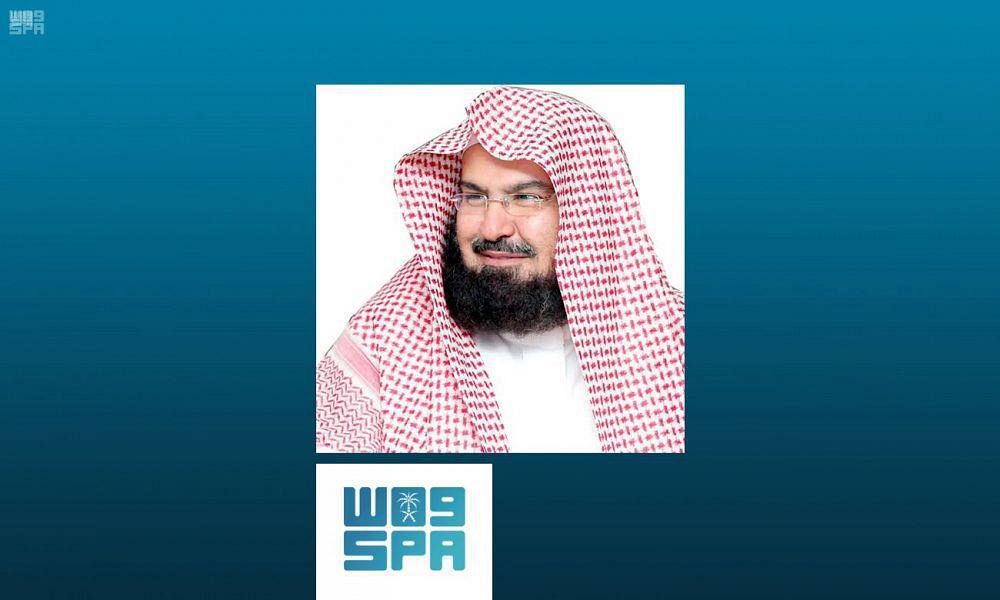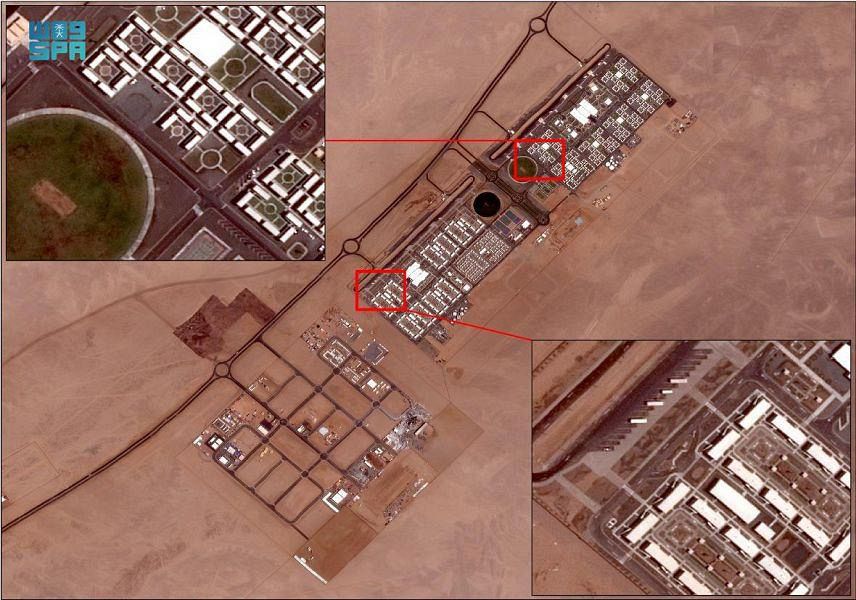
MAKKAH — Since King Abdulaziz Al-Saud established the modern Kingdom of Saudi Arabia in 1932, the country"s dedication to Islam is demonstrated by its superb maintenance and continued expansion of the Two Holy Mosques in Makkah and Madinah and other holy sites, enabling a greater number of Muslim pilgrims to perform the Hajj and Umrah (the minor pilgrimage).
From the era of King Abdulaziz down to the current monarch, Custodian of the Two Holy Mosques King Salman, all the rulers have displayed sincerity of purpose and courage of conviction in the upkeep, maintenance and expansion of the holy sites.
In the process, the rulers have made use of the most modern engineering techniques and knowhow emanating from their responsibility and great honor bestowed by Almighty Allah for taking care of the Two Holy Mosques.
The maintenance and expansion of the holy sites has always been an essential priority for the Kingdom. Every year billions of riyals from the annual budget are allocated exclusively for this purpose, a Saudi Press Agency report said on Sunday.
The Ministry of Hajj and Umrah, in conjunction with other government agencies, oversees the annual logistical challenge of preparing for the Hajj and supports projects in the Kingdom and abroad that promote Islam"s role in the community.
Successive rulers of the Kingdom always considered it their bounden duty to provide all comfort to the millions of pilgrims from across the globe enabling them to perform their religious obligations in a spiritual atmosphere, comfort, security and safety.
Beginning with the late King Abdulaziz, Saudi leaders have directed a series of ongoing projects aimed at improving the quality of accommodation, health care and other services for the pilgrims. An essential component of this policy has been the expansion of the Holy Mosque in Makkah and the Prophet"s Mosque in Madinah.
At the time of Saudi Arabia"s unification in 1932, the Grand Mosque could accommodate 48,000 worshipers and the Prophet"s Mosque 17,000. Different expansion plans have increased the capacity of the Two Holy Mosques to more than four million and over 1.5 million, respectively.
One of the key accomplishments of late King Abdulaziz in 1344 AH was to entirely restore and renovate the colors of the Grand Mosque in Makkah in 1344 Hijra year. He also oversaw the decoration of the facades overlooking the Grand Mosque and its courtyards with marble.
A year later, late King Abdulaziz ordered to install marquees in the courtyard of the Grand Mosque to protect worshipers from the heat of the sun; and in 1346 Hijra year, he also ordered repair of the canopy of Station of Prophet Ibrahim (peace be upon him), the dome of Zamzam and the base of the Holy Kaaba.
King Abdulaziz also ordered installation of marquees at the piazza of the Holy Kaaba and fixed umbrellas on the sides of the piazza, attached to porticos which were spread and folded when needed, and they remained for many years and had been renewed continuously.
In 1346 AH, the late King Abdulaziz also ordered the establishment of the first factory for Kaaba Kiswa (Cover) in Makkah, and Masa"a (hastening path between Safa and Marwah hillocks) be paved with square granite stones and with reflected lights for the first time in history.
He also ordered the establishment of a security department with its headquarters in Makkah for enhancing security. He directed the removal of the outposts of shops that narrowed Masa"a which became very straight and good-looking.
The late King ordered the establishment of two standpipes for Zamzam water with the restoration of the old one and the repair of the stones spread throughout the piazza"s path and the corridors" floors.
In 1354 AH, King Abdulaziz also ordered the removal of the old gravel and replaced it with new ones. In 1366 AH, he ordered renovation of the ceiling of Masa"a and establishment of a new door for the Holy Kaaba covered with finest pure silver plates embroidered with Qur"anic verses engraved in different calligraphic forms in threads of pure gold.
After that, the sons of late King Abdulaziz continued to take care of the service of the Two Holy Mosques. In 1373 and 1374 Hijra years, late King Saud Bin Abdulaziz directed the installation of a pump to raise the water of Zamzam, construction of a building for Zamzam water in front of the Zamzam Well, building Masa"a with its two floors and the expansion of piazza.
He also ordered the renovation of the Holy Kaaba in 1377 AH, when the upper and lower roofs were completely replaced, and the Kaaba stones that were exposed to cracks and dust accumulation were treated.
Late King Faisal Bin Abdulaziz ordered removal of the canopy on the Station of Prophet Ibrahim (pbuh) for widening the space for those circumambulating the Holy Kaaba, and covered the station with crystal enclosure in 1387 AH. He also directed the construction of a library for the Grand Mosque in 1391 AH and a factory for Kiswa at its new location in Umm Al-Joud along with expanding its works.
The new Kiswa factory was inaugurated in 1397 AH. In 1398 AH, the piazza was expanded, its floor was furnished with heat-resistant marble and the pulpit was transferred while the basement of Zamzam was expanded, making its entrance close to the edge of the old mosque in the direction of Masa"a.
In 1399 AH, during the reign of late King Khalid Bin Abdulaziz, the door of the Holy Kaaba was made of pure gold by Ahmed Bin Ibrahim Badr, a leading goldsmith. He used 280 kg of pure gold in manufacturing the door. Some considered it the largest gold block in the world, which is the current existing door, and a door was made inside the Holy Kaaba for ascending, which is called the door of repentance.
In 1417 AH, during the reign of late King Fahd Bin Abdulaziz, comprehensive restoration of Kaaba at the highest modern architectural specifications was carried out, where it stood about 375 years without comprehensive restoration; yet in this current prosperous Saudi era, the Grand Mosque was reconstructed three times along with historical architectural expansions that have never been seen in history.
Under the personal direction of King Fahd, the work also improved the infrastructure and services necessary to enable the millions of pilgrims to carry out their religious observances in comfort and safety.
This included new airport and port facilities in Jeddah and other points of entry for pilgrims, roads to Makkah and Madinah, comfortable accommodations and an extensive health care network. It is an effort that is ongoing, with improvements each year that have included the installation of fire-proof tents and the provision of telecommunication facilities.
Late King Abdullah Bin Abdulaziz ordered the second Saudi expansion, which is continuing now under the leadership of Custodian of the Two Holy Mosques King Salman. King Salman approved changing the name of the factory of the Holy Kaaba Kiswa (Cover) to King Abdulaziz Complex for Holy Kaaba Kiswa in 1439 AH.
During the reign of King Fahd, the Grand Mosque was largely expanded in 1403 AH, where the real estate of the small market (west of the mosque) was acquired to facilitate the expansion. The acquired land was 30,000 sq. meters and was allocated as a temporary prayer area before construction of a permanent building.
In 1406 AH, the late King Fahd ordered to pave the ground with temperature-proof marble, and to construct five escalators and five bridges for first floor entry. In 1409 AH, King Fahd laid the foundation stone for a large second expansion.
During King Abdullah"s tenure, the third expansion was launched to become the greatest of all times including increasing the capacity of the Grand Mosque to 2 million worshipers.
The outer yard expansion includes lavatories, corridors, tunnels and other supporting facilities to facilitate entry and exit of worshipers. The service area includes air-condition, power and water stations.
Successive Saudi rulers have also developed the holy sites near Makkah including Namira Mosque in Arafat, the Holy Mosque in Muzdalifah, and Al-Khaif Mosque in Mina, as well as the provision of infrastructure and service facilities for health, environment, security, transport, telecommunication, road network, fireproof tents in Mina, Jamarat (Throwing Pebbles) Bridge and Train of the Holy Sites.
King Salman is continuing with the development and maintenance projects. He has ordered to continue with the third expansion of the Grand Mosque and the Prophet’s Mosque, and to follow up on the development projects of Makkah, Madinah and the holy sites, in order to improve the services being provided to citizens of the two holy cities and visitors of the Two Holy Mosques.
Crown Prince Muhammad Bin Salman, Deputy Prime Minister, Minister of Defense and President of the Royal Commission for Makkah City and Holy Sites recently inspected the Holy Kaaba, and the projects of Makkah, Madinah and the Grand Mosque.
He is keen on developing and maintaining the Two Holy Mosques to improve the services and facilities of Makkah and Madinah in accordance with the objectives of the Kingdom"s Vision 2030.
The vast financial and human resources Saudi Arabia has committed to the Hajj reflect the dedication of the leadership and citizens of the Kingdom to the service of Islam and the holy sites and their preservation as a haven of peace for all Muslims.









